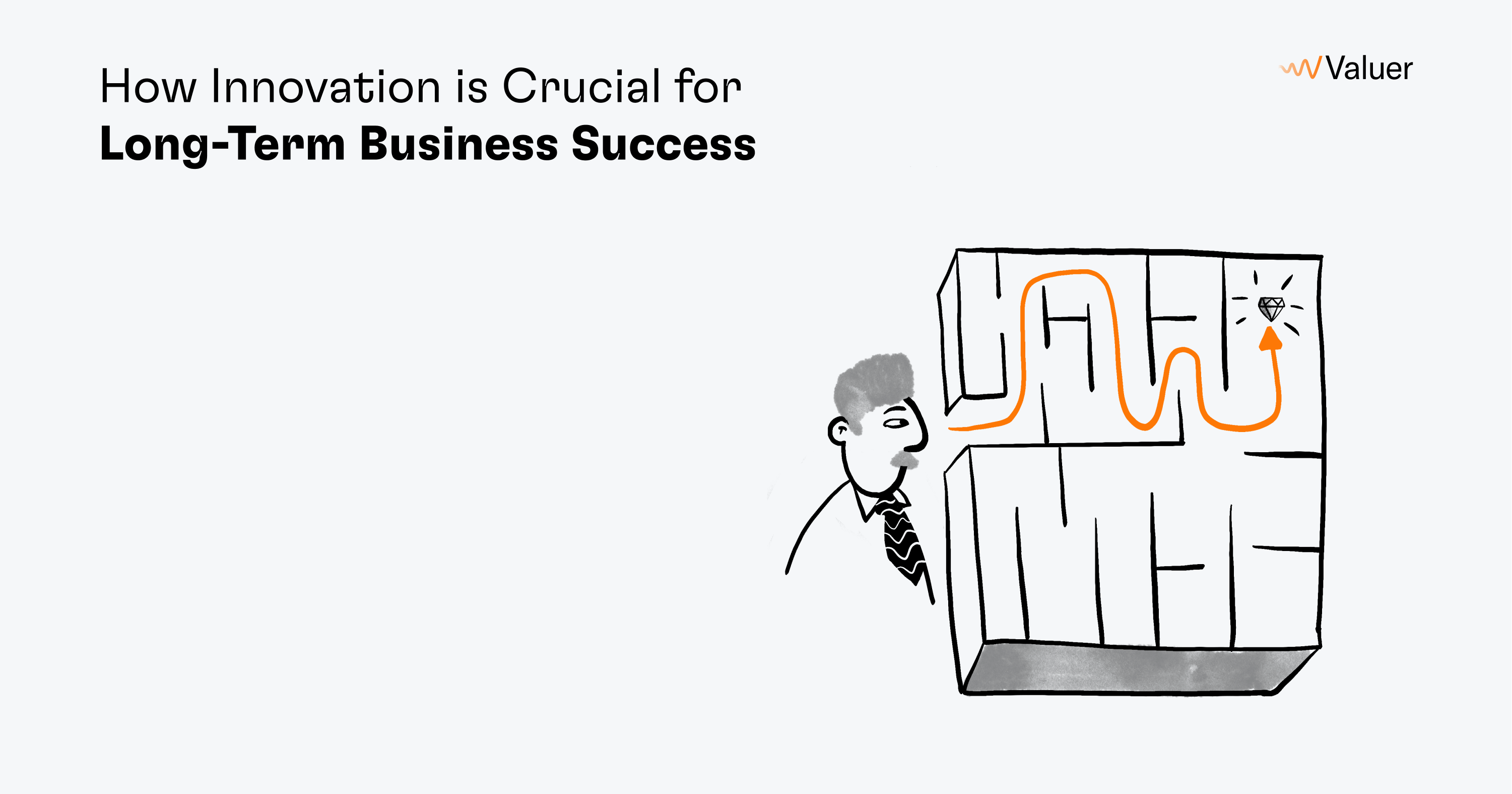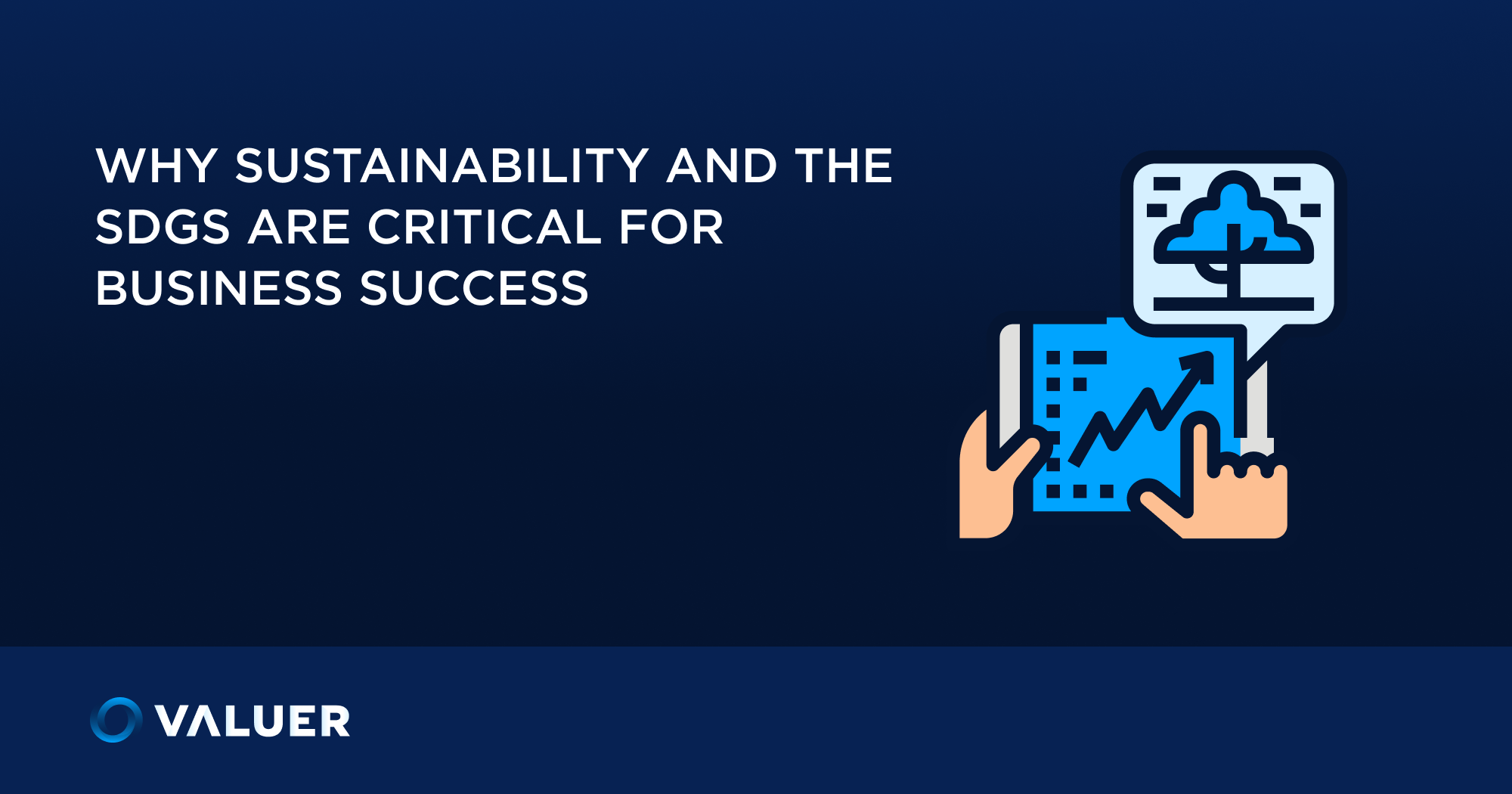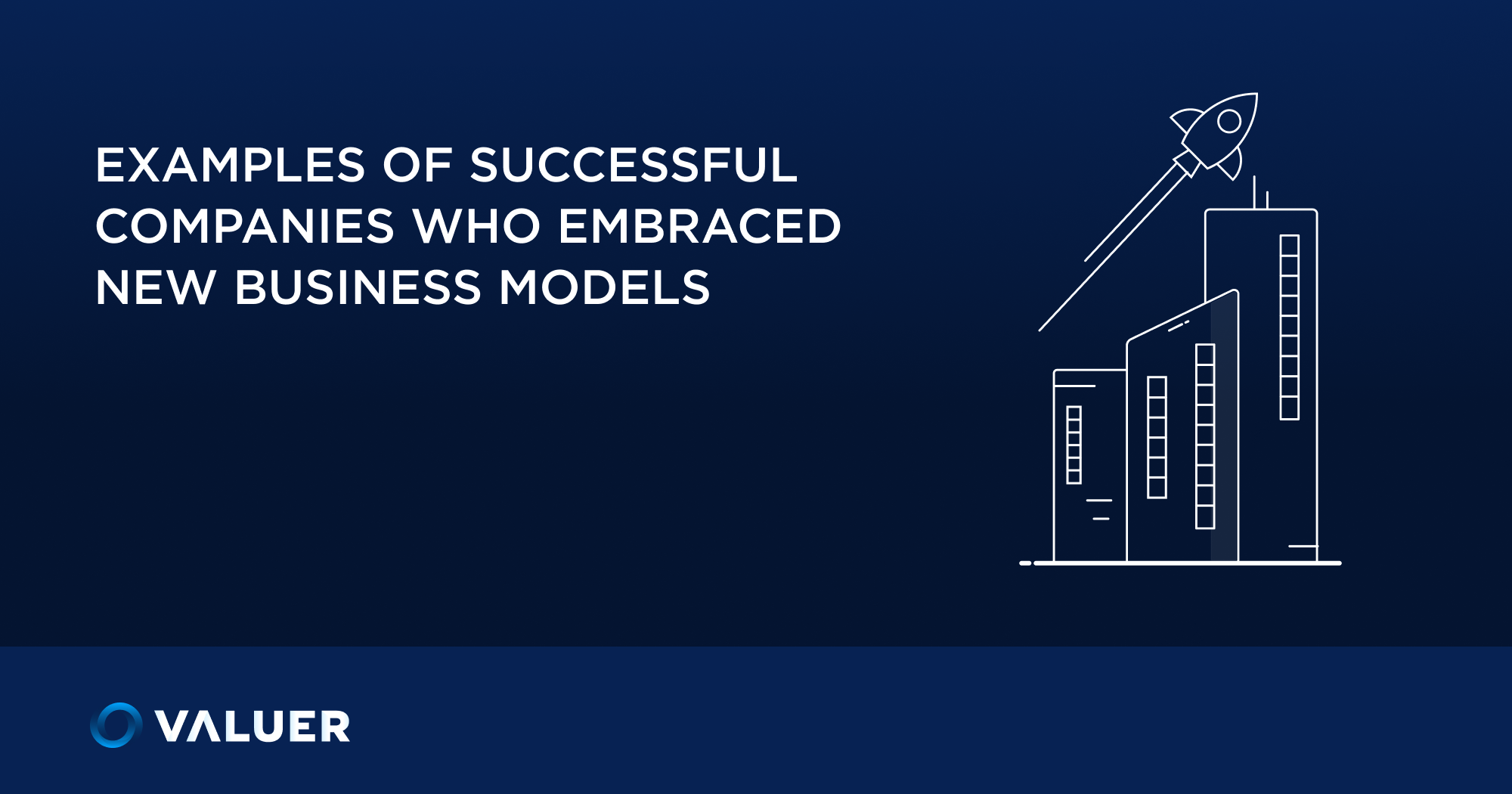*Updated January 2023
For the past two decades, the one pattern that has remained constant within the business landscape is that the contemporary business climate doesn't support patterns. The paradigms perpetually shift and are setting new dynamic standards. This unpredictability is often worrisome for business incumbents, as the risk of being out-advantaged is always lingering.
Many companies today are hindered by the nature of their existing business practices. By not being able to adapt to future changes has led them to their downfall that was impossible to recover from.
Research indicated that 88% of the Fortune 500 firms that existed in 1955, by 2014 were gone, massively due to the fact that they failed to innovate.
“The constant turnover in the Fortune 500 is a positive sign of the dynamism and innovation that characterizes a vibrant consumer-oriented market economy, and that dynamic turnover is speeding up in today’s hyper-competitive global economy,” the report emphasizes.
These numbers only confirm the reality that everything was pointing to: change is inevitable and must be embraced to its full extent.
The inception of the digital transformation, disruptive technologies, business models, and automated approaches has led many to believe that these changes would threaten jobs, and in some cases, this is true. Over time, however, this narrative has now focused on how the digital era offers new exciting and challenging opportunities.
This marked the beginning of the innovation-driven business renaissance.
[Related Article - Redefining Value in the Innovation Economy]
Adapting to the emerging changes as a corporation
The transformative power of technology prompted substantial adaptation of new business models that foster innovative thinking and technology-inclined strategies throughout the business landscape.
Faced with mounting pressure, these business contenders are aware that they must embrace fundamental changes that would have transformative influence within the industry and a broader range of applications.
In order to adapt to this competitive pressure, business environments need to be restructured, business models changed, and shifting the network towards more revenue-prolific streams.
The current business climate orchestrates leadership that must outthink the competition and engages in tech-induced strategy alternation.
Corporate entities are keen to leap towards tech-uplifting changes; however, not all are as strong on that front. They possess resources, financial stability, and an excellent reputation, but the lack of innovation in the tech department can significantly put them at a disadvantage.
This shortcoming stimulates corporations to widen their business horizon and leverage external resources. By networking, they are exposing their mission to greater market visibility. Greater exposure delivers a broader business environment for discovering partnerships
The “early bird gets the worm” applies to the corporate world as well. Procrastination doesn’t apply within the success margins. As prompt the meet-and-pitch process is, the sooner the search will come to fruition.
Taking a few crucial steps before the Alliance Hunting
The corporate world covers a sheer landscape of opportunities. If the “business radar” is not set on the right coordinates, it will become harder to navigate through. To avoid this problem, it’s essential to outline what to look for before networking.
The experience will be far more productive if the partner-persona is defined beforehand. By specifying exactly what you are searching for will drastically improve the matching compatibility and will save valuable time and resources.
Forbes puts a highlight on the importance of pre-defining a suitable partner.
“The advantage in having even a brief sense of your preferences is that it can streamline and shorten your search. By defining your expectations, you give yourself a more subjective set of metrics by which to evaluate candidates, rather than arbitrarily deciding whether you “like” the person or not. Consider, for example, how you would like the relationship to function. Your expectations may evolve over time, and you can certainly refine your outlook as you meet with potential partners,” states the article.
In the same context of importance, a crucial factor towards a successful partnership is to align with the same business goals.
The foundation for a well-functioning alliance is rooted in transparent dialogue and elaborate discussion on the expectations, approaches, and long-term goals. By knowing the partner’s strong and weak sides, corporations can get a better sense of the potential risk factors.
By setting clear guidelines for the partnership, the interaction steers clear of discrepancies, which can ultimately make the connection a prolific exchange in value.
Valuer.ai can provide guidance. Innovation Themes is a tool aimed to steer corporations on the right track in their partnership search, and help them analyze and prioritize new business opportunities. A significant point of interest for the corporations here is that they receive a unique technology landscape (cluster) on potentially relevant technologies.
By leveraging such a tool, unnecessary “wander” can be circumvented, thus saving valuable time and effort that can be dedicated to another area of importance.
Once this is sorted out, the step that follows is analyzing areas that would most benefit from these partnerships.
Spot opportunities within the trends
Trendspotting is a step when climbing business staircases. The ability to recognize and acknowledge emerging challenges on the market substantially rewards the market posture entities have. Predicting shortfalls within the industry reinforces the influence of the business entities, and reaffirms their power as a market player, worthy of setting industry changes.

Deloitte estimated that more than 1 in 10 organizations (11.6%) accumulate significant value when they explore innovative technology.
“Opportunities abound for tech leaders who have the tenacity to lead across the enterprise. By stepping beyond a functional leadership role, tech leaders can drive technology deep into the organization. This requires organizations to embrace enterprise agility by rethinking their approaches to talent, learning and collaboration, and strategic technology funding practices.”
When tackling trends, the startup ecosystem is the oasis to seek answers within. Although very fragile by business nature, startups are a strong contender in developing innovative solutions.
They build their foundation on conquering emerging challenges with new infrastructure. Corporations are aware that startups take the extra mile in observing the market needs, which significantly decreases their chance of failure. The success drive of the young entities draws corporations to view them as a very potential-worthy business opportunity. It takes one state-of-the-art introduction on the market to disrupt the industry.
For corporations, these market disruptions represent a medium to channel new revenue streams. For startups, this is an uplift in visibility, representation, financial stability, and, most importantly, scaling of the product. On both ends, this format of business transaction extracts excellent value.
In essence, trendspotting with startups is currently the most prolific landscape to discover (successful) business opportunities.
Co-creation as success-prone partnership
The importance of tackling trends is indubitably the most prolific channel to seek for new businesses. However, more often than ever before, corporations focus on treating the shortfalls they find most vulnerable within their margins.
This opens a new avenue for discovering businesses that will not only put their best product to the table, but corporations will restore their corporate agility. This policy of co-creation is estimated as a strong asset for acceleration in the contemporary business climate, with high potency for innovation.
"In today's market, ever fewer organizations can rely exclusively on an internal R&D process to generate innovation. A model of cooperative innovation—an ecosystem—is increasingly critical to drive value for all parties involved. We see this as co-creation—strategic partners actively collaborating to create and deliver customer-centric products and services (offers) that capture greater value, more rapidly and at lower risk than traditional product-development approaches," emphasizes Deloitte.
Hitachi researched the matter and found that in Europe, most organizations have already initiated at least one co-creation pilot or rolled out co-creation, with 57% referring that it transformed their company's standpoint to innovation.
In essence, business interactions of such kind hold numerous advantages over traditional business relations. For one, the market launch takes off in a reduced timeframe, with hastened product development cycles and shorter concept-to-launch implementation.
Also, risks are better estimated, and if they do occur, they are handled with better management and shared costs. Lastly, this opens new resource access points and untapped capabilities within the market, that diversify the corporations' network margins.
Apply existing technologies to a different industry
Corporations hold substantial experience with different business models as they are exposed to diverse business channels. Maintaining active motion within a particular industry accumulates knowledge over time on what functions well for that market. And very often, technologies hold high versatility to them, that makes them eligible for broader applicability.
By being familiar with how certain business models operate with certain technology, corporations understand their contexts of applicability better. Knowing the applicability range enables creation of precision in value. Ultimately, this leads existing technologies to be enforced within new margins, with good adaptation rate and sheer acceptance among new market masses.

When corporations work with certain technology for a longer period, this allows them to predict the pace on how well the infrastructure will adapt within new industries. This enables a better estimation of reach and whether the risk is worth taking.
For corporations, exploring alternative industries opens new fronts for business penetration. Engaging in such ventures, allows them to capitalize on existing resources, with slight modifications.
Harnessing existing data and information to generate new economic value is well-underway to become an aspiring medium of sustenance. And it’s not just that. By presenting as context-oriented facilitators of change, corporations tighten their posture as market leaders who know how to tailor solutions for niche audiences.
Never stay idle
As a final point, it’s essential to highlight the significance of staying in motion. Corporations that keep their pace with the market never lose relevance.
In the corporate world, snoozing means losing. If emerging trends, market players, and opportunities are not captured on time, the chances are that the competition is already “collecting the bounty”.
It goes beyond saying that having a competitive edge is paramount to remain germane in a saturated business environment. And most importantly, the edge must be kept running. Maintaining corporate agility must always be covered.
Idleness is associated as a sloppy feature within the corporate landscape. Alongside avoiding this, goes keeping an open mind about changes.
Presenting as an entity that is willing to embrace change and put an effort in doing so, lands a market seal of approval that goes a long way. Portraying boldness and innovation-driven attitude enables corporations to be seen as a reliable establishment for collaboration.
Essentially, this furnishes an upsurge in business proposals and discovering new commercial channels for product scaling.
Maintain a leader in an innovation economy
The corporate world is a highly-competitive and ever-changing environment. To maintain leadership agility, corporations must keep afoot in motion and with keen cognizance for emerging trends.
Staying relevant and in dominance calls for busy networking and business ingenuity. Binding new connections and being surrounded with like-minded innovative businesses opens new market fronts to conquer, with discoveries that leave the masses in awe.

By building new alliances, corporations get to explore untapped commercial capacities, with disruptive technology. Being aligned within such a dynamic, corporations cultivate an innovation-driven culture that slowly but steadily, stimulates the business environment to shift its focus towards an innovation economy mindset.
Nurturing such a mindset allows business contenders to navigate and better adapt to newly-imposing standards and sharpen their business instincts.
As an innovative business company ourselves, we at Valuer know the true power of digital elevation and harnessing the innovation economy.
With a database of over 500 000 startups, Valuer harnesses the power of AI to mediate between and connect distinguished names like Orsted, Grundfos, and Uniper with aspiring startups that share the same vision and appetite for success. Our matching mechanisms rely on data-driven insights for aligning corporations with relevant areas of business growth.
By highlighting relevant technology within selected industries, we enable corporations to drive innovative initiatives on a larger scale. With such vision, we aspire to serve as the force that will stimulate business contenders to keep keen on elevating the standards.
By doing so, we actively contribute to an environment that strives to move the boundaries of modern living.












